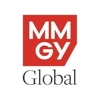

The term “DMO” is a relic of the past. While many in the tourism industry have shifted away from the traditional “Destination Marketing Organization” moniker to position themselves as a more modern “Destination Management Organization” that takes a more active role in coordinating, advocating and promoting the various partners and stakeholders in their destination. Even fewer have been so bold as to refer to their true role as a “Destination Leadership Organization” (DLO), though that is indeed the position they are trending toward fulfilling in today’s travel marketplace.
Though the DLO name has been discussed to some degree over the past decade, destination organizations have only been recently taking on the strategic roles that define destination leadership. Responsibilities such as economic development, resident sentiment management, talent attraction and retention, community engagement, and policy influence are becoming less optional – quickly bleeding into their core responsibilities.
Traditional organization KPIs, like visitor volume, average length of stay and average visitor spend, will continue to be scrutinized. However, the means by which DLOs reach those goals are changing rapidly – driven in part by a more discerning, passionate traveler.
Looking at trends we see three-quarters of travelers reporting that the memories they get from travel are more valuable than the material purchases they make. Destinations are even becoming a representation of who the travelers see themselves as, with half stating that the places they visit are a reflection of who they are. Fifty percent of travelers also highlight “experiencing different cultures” as a top travel motivator. This all places a lot of pressure on DLOs to pull local creators and entrepreneurs, the front-line perception drivers, into the placemaking process to ensure that the destination is attractive to prospective visitors.
The DLO’s expanded scope of influence does not stop at local businesses. While partnering with local hotels, attractions and business leaders will continue to be valuable, engaging community leaders, local social media influencers and policymakers will be critical to success. Additional partnerships will ensure that the role of tourism in the community is shared by locals, that economic white space is proactively identified and leveraged, that all marketing of the destination is done in a unified voice, and that local regulations are designed in a way that balances the needs of residents with the value prospective travelers bring.
Smart DLOs are also shifting their view of this value. Attracting the right “kind” of visitor who embraces local values and is committed to the sustainable consumption of area resources is a delicate science that can be fruitful in not only monetary return on investment but also in boosting local perceptions of tourism. Additionally, DLOs who invest in identifying their optimal traveler know that a high-value visitor may become a future student, resident or business owner who would bring resources to further destination growth.
The DLO mindset is not new, although the name is. Destination managers have been shifting their roles and responsibilities slowly over the years to fully encompass destination leadership. The new reality that destination organizations face as their function evolves and expands necessitates an appropriate label – one that adequately conveys their responsibility to their region and the lives of residents and visitors.
Trey Williams, VP, Strategic Planning, MMGY